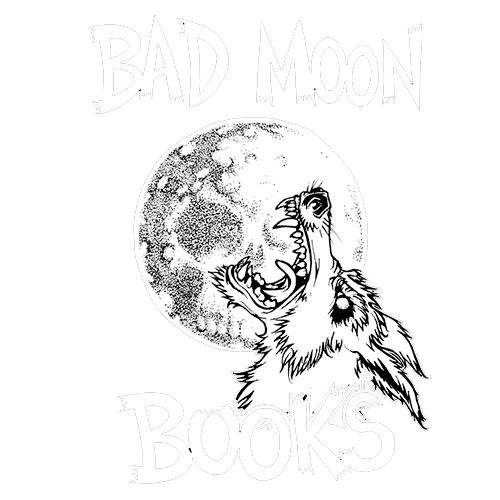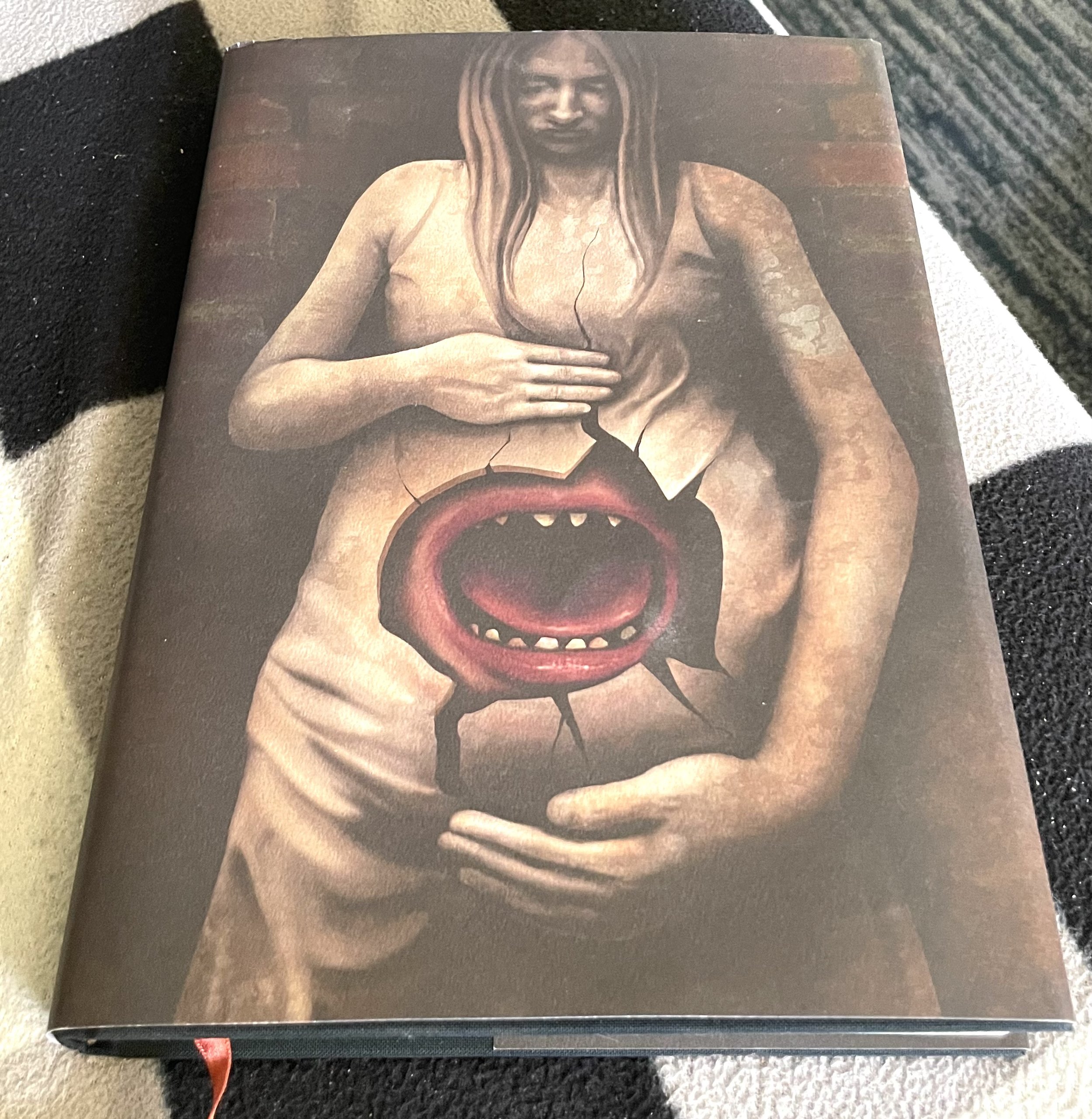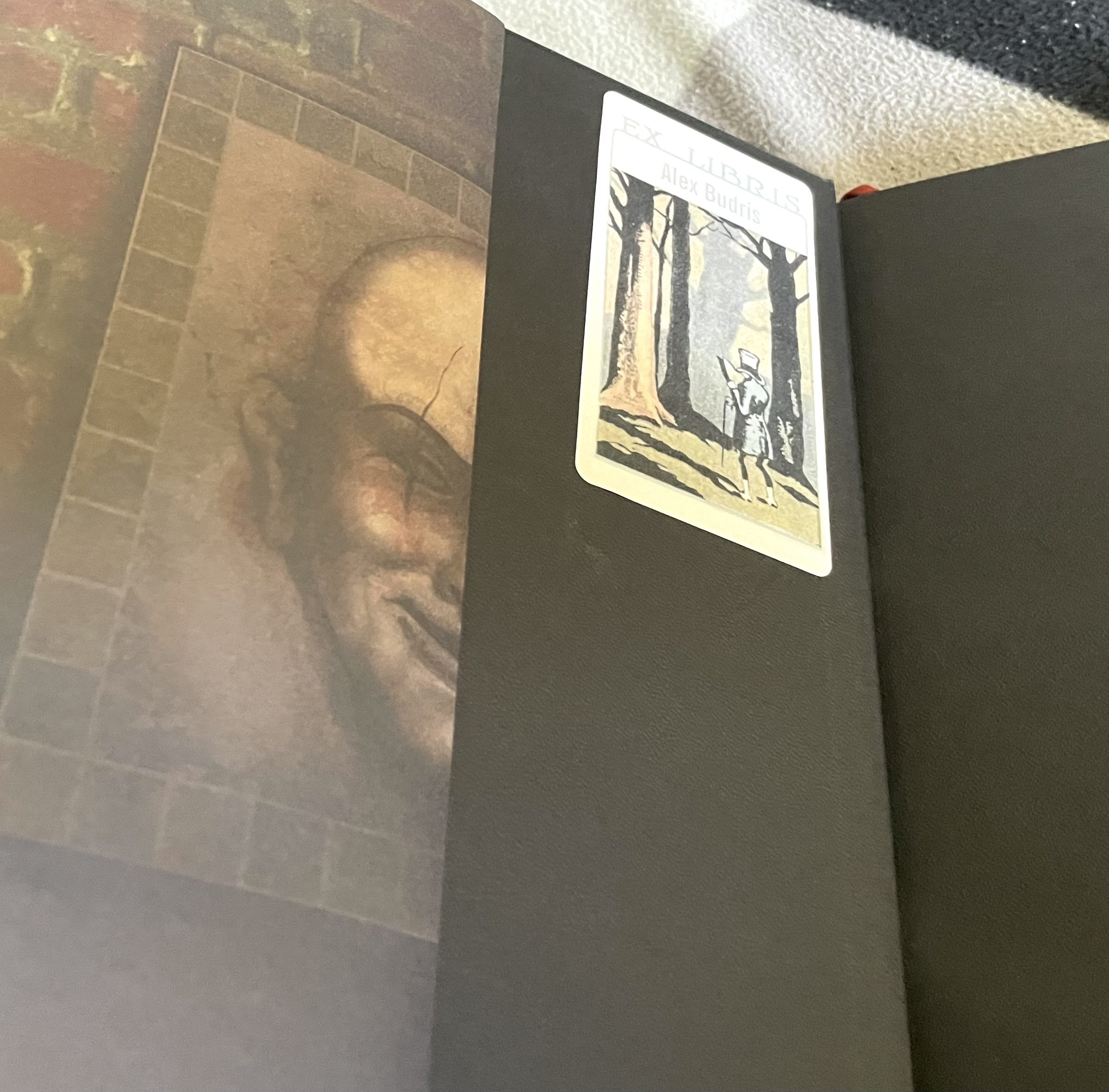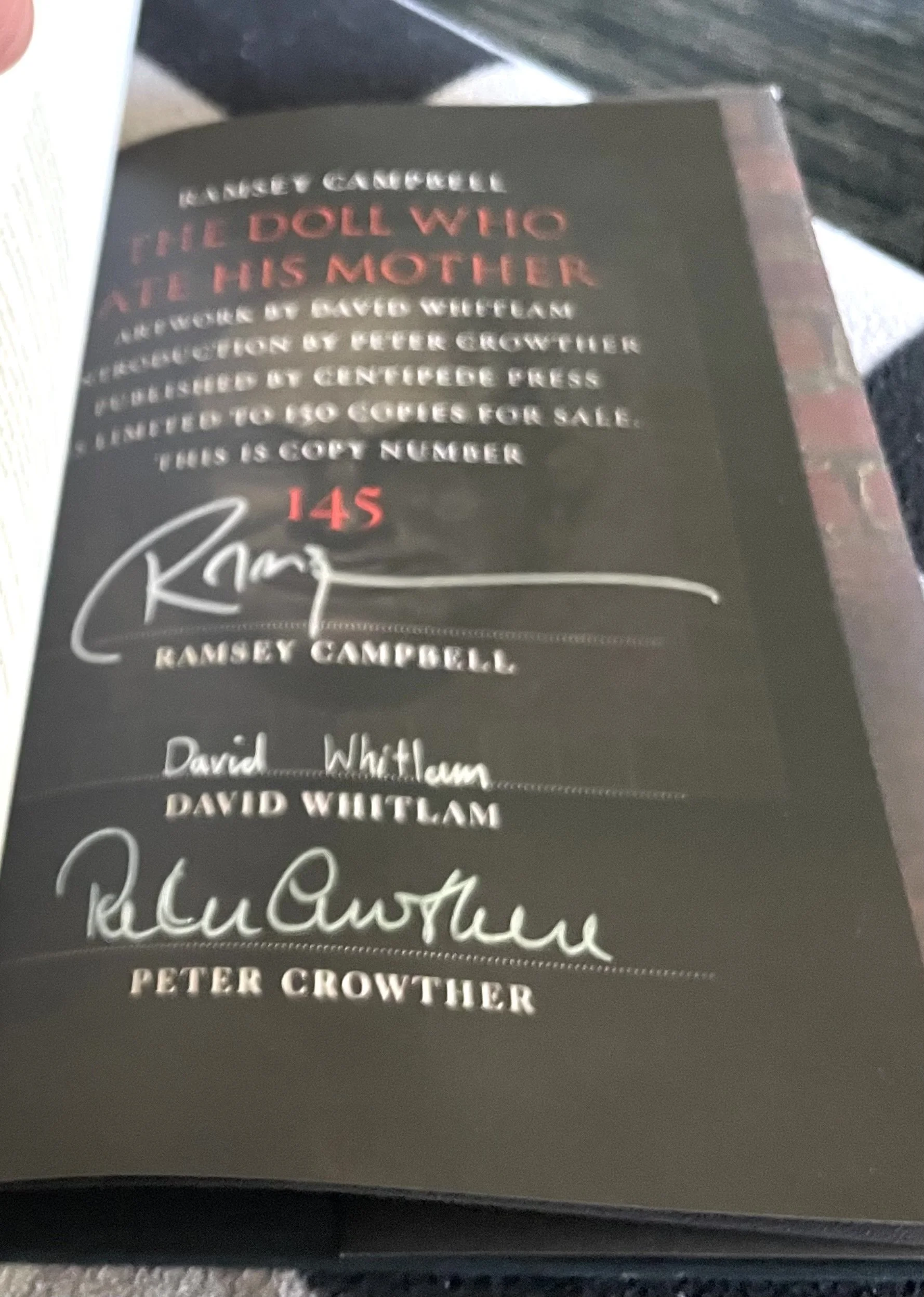Ramsey Campbell The Doll Who Ate His Mother Signed/#’d
A fine copy and a fine dust jacket with some minor Edgewear
*****SMALL Decorative book plate on front pastedown
EDITION INFORMATION
Introduction by Peter Crowther.
Afterword by Ramsey Campbell.
Review of the book by Stephen King.
Beautifully typeset with a lot of extras.
Ribbon marker, head and tail bands.
Limited to 150 signed copies.
Published March 2018.
ISBN 978-1-61347-118-0.
SYNOPSIS
Rock music gave America its British Invasion in the 1960s, starting with the Liverpool band The Beatles along with the Rolling Stones, the Who and many others. A second British Invasion came in the horror genre a decade later with novels by Dennis Wheatley and John Blackburn and a wealth of short story collections by Charles Birkin. Included in this flood of quality horror fiction a collection by Ramsey Campbell might well have been overlooked, but with his first novel, The Doll Who Ate His Mother, the real British Invasion had begun, and the works of previous authors were merely opening salvos. This was the real invasion.
The Doll Who Ate His Mother was a remarkable debut novel, nominated for the 1977 World Fantasy Award.
After a strange man steps in front of Clare Frayn’s car on a wild, rainy night causing her to lose control of the vehicle with the resulting accident claiming her brother’s life. Clare begins an investigation to try and learn the identity of the man and why he appeared to be carrying a human arm…
Over the course of the novel Clare winds up recruiting the assistance of a sleazy true-crime writer, who seems to know a great deal about the man she is looking for; a gentleman named Chris Barrow, who, while seemingly charming and helpful, may be driven by less-than-pure motives; and finally George Pugh, the owner/operator of a quaint old movie theater, who appears to be completely altruistic in his desire to help Clare.
One or more of these men is not what he seems and there is a real horror at work here that Clare has yet to glimpse the surface of. The closer she gets to finding out why her brother really died, the closer she gets to risking her own doom…
Ramsey Campbell’s debut novel builds slowly in a deliberately paced chilling manner to a major twist dropped in two-thirds of the way through and finally to a climax that is totally unexpected.
The edition measures 7 × 10 inches. There is a new introduction by Peter Crowther, afterword by Ramsey Campbell, and a reprint of Stephen King’s review of the book from Whispers back in 1976. Color reproductions of old editions are included in the introduction. The book has a top edge stain, ribbon marker, and a very handsome signature pages. The edition is signed by signed by Ramsey Campbell, Peter Crowther, and cover artist David Whitlam.
A fine copy and a fine dust jacket with some minor Edgewear
*****SMALL Decorative book plate on front pastedown
EDITION INFORMATION
Introduction by Peter Crowther.
Afterword by Ramsey Campbell.
Review of the book by Stephen King.
Beautifully typeset with a lot of extras.
Ribbon marker, head and tail bands.
Limited to 150 signed copies.
Published March 2018.
ISBN 978-1-61347-118-0.
SYNOPSIS
Rock music gave America its British Invasion in the 1960s, starting with the Liverpool band The Beatles along with the Rolling Stones, the Who and many others. A second British Invasion came in the horror genre a decade later with novels by Dennis Wheatley and John Blackburn and a wealth of short story collections by Charles Birkin. Included in this flood of quality horror fiction a collection by Ramsey Campbell might well have been overlooked, but with his first novel, The Doll Who Ate His Mother, the real British Invasion had begun, and the works of previous authors were merely opening salvos. This was the real invasion.
The Doll Who Ate His Mother was a remarkable debut novel, nominated for the 1977 World Fantasy Award.
After a strange man steps in front of Clare Frayn’s car on a wild, rainy night causing her to lose control of the vehicle with the resulting accident claiming her brother’s life. Clare begins an investigation to try and learn the identity of the man and why he appeared to be carrying a human arm…
Over the course of the novel Clare winds up recruiting the assistance of a sleazy true-crime writer, who seems to know a great deal about the man she is looking for; a gentleman named Chris Barrow, who, while seemingly charming and helpful, may be driven by less-than-pure motives; and finally George Pugh, the owner/operator of a quaint old movie theater, who appears to be completely altruistic in his desire to help Clare.
One or more of these men is not what he seems and there is a real horror at work here that Clare has yet to glimpse the surface of. The closer she gets to finding out why her brother really died, the closer she gets to risking her own doom…
Ramsey Campbell’s debut novel builds slowly in a deliberately paced chilling manner to a major twist dropped in two-thirds of the way through and finally to a climax that is totally unexpected.
The edition measures 7 × 10 inches. There is a new introduction by Peter Crowther, afterword by Ramsey Campbell, and a reprint of Stephen King’s review of the book from Whispers back in 1976. Color reproductions of old editions are included in the introduction. The book has a top edge stain, ribbon marker, and a very handsome signature pages. The edition is signed by signed by Ramsey Campbell, Peter Crowther, and cover artist David Whitlam.
A fine copy and a fine dust jacket with some minor Edgewear
*****SMALL Decorative book plate on front pastedown
EDITION INFORMATION
Introduction by Peter Crowther.
Afterword by Ramsey Campbell.
Review of the book by Stephen King.
Beautifully typeset with a lot of extras.
Ribbon marker, head and tail bands.
Limited to 150 signed copies.
Published March 2018.
ISBN 978-1-61347-118-0.
SYNOPSIS
Rock music gave America its British Invasion in the 1960s, starting with the Liverpool band The Beatles along with the Rolling Stones, the Who and many others. A second British Invasion came in the horror genre a decade later with novels by Dennis Wheatley and John Blackburn and a wealth of short story collections by Charles Birkin. Included in this flood of quality horror fiction a collection by Ramsey Campbell might well have been overlooked, but with his first novel, The Doll Who Ate His Mother, the real British Invasion had begun, and the works of previous authors were merely opening salvos. This was the real invasion.
The Doll Who Ate His Mother was a remarkable debut novel, nominated for the 1977 World Fantasy Award.
After a strange man steps in front of Clare Frayn’s car on a wild, rainy night causing her to lose control of the vehicle with the resulting accident claiming her brother’s life. Clare begins an investigation to try and learn the identity of the man and why he appeared to be carrying a human arm…
Over the course of the novel Clare winds up recruiting the assistance of a sleazy true-crime writer, who seems to know a great deal about the man she is looking for; a gentleman named Chris Barrow, who, while seemingly charming and helpful, may be driven by less-than-pure motives; and finally George Pugh, the owner/operator of a quaint old movie theater, who appears to be completely altruistic in his desire to help Clare.
One or more of these men is not what he seems and there is a real horror at work here that Clare has yet to glimpse the surface of. The closer she gets to finding out why her brother really died, the closer she gets to risking her own doom…
Ramsey Campbell’s debut novel builds slowly in a deliberately paced chilling manner to a major twist dropped in two-thirds of the way through and finally to a climax that is totally unexpected.
The edition measures 7 × 10 inches. There is a new introduction by Peter Crowther, afterword by Ramsey Campbell, and a reprint of Stephen King’s review of the book from Whispers back in 1976. Color reproductions of old editions are included in the introduction. The book has a top edge stain, ribbon marker, and a very handsome signature pages. The edition is signed by signed by Ramsey Campbell, Peter Crowther, and cover artist David Whitlam.



